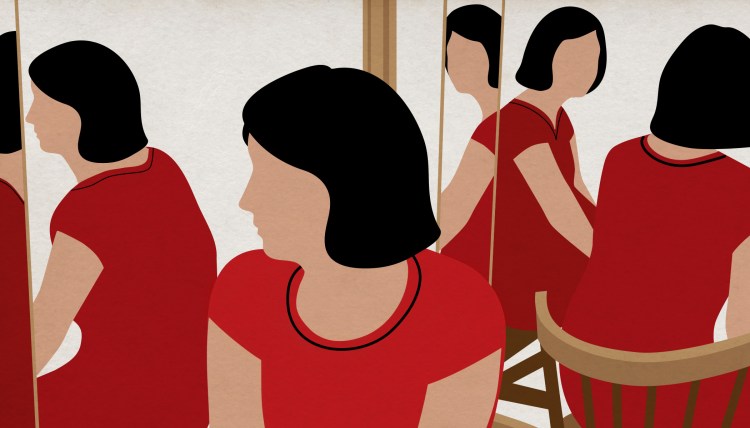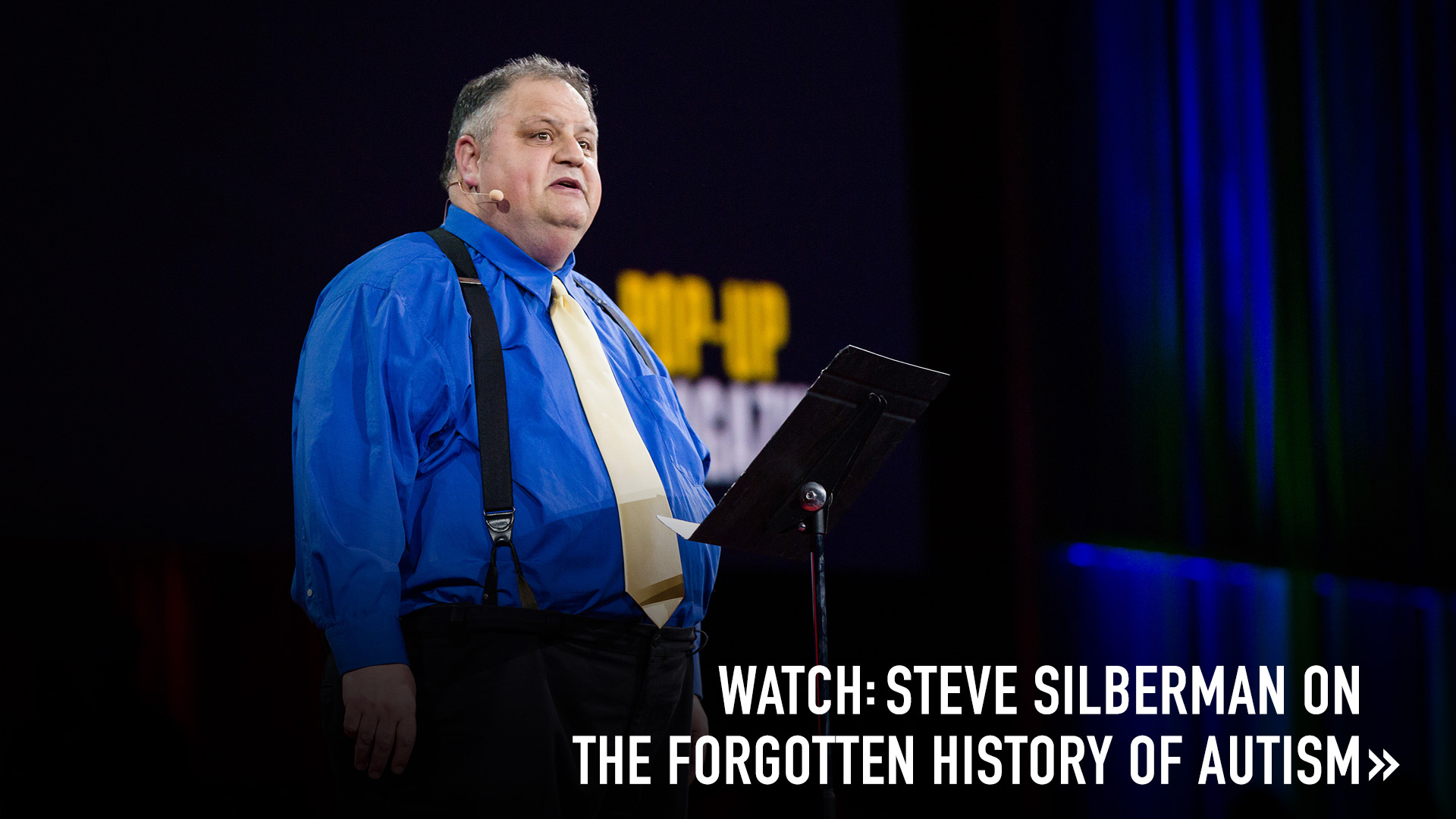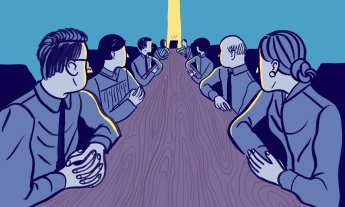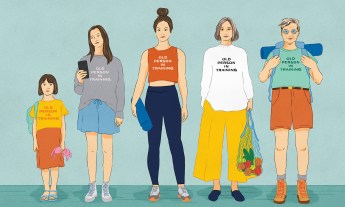
When people with developmental disabilities have the support they need to thrive, everyone benefits. In a speech at the United Nations on April 1, Steve Silberman made the case that it’s past time we all learned to honor neurodiversity. An edited version of his text follows.
We are living at a very exciting time — a time of great hope for autistic people and their families. Society is on the brink of a major transformation in its understanding of autism and other developmental disabilities, and everyone on the leading edge of this transformation — whether they’re a teacher, a policymaker, a disability-rights advocate, the parent of a child on the autism spectrum, an autistic person themselves, or several of these things at once — is playing a crucial role at this long-awaited turning point in history.
We’re evolving as a society from viewing people with autism merely as checklists of deficits and dysfunctions — seeing them solely through the lens of pathology, only in the light of the things they can’t do or struggle to do — to viewing autism as another way of being human, with its own distinctive strengths and positive attributes as well as profound challenges.
These strengths offer potential boons to our communities and workplaces, but only if we are able to provide the appropriate accommodations, supports, resources and research to improve the quality of life for autistic people and their families. We’re moving from viewing people on the autism spectrum as failed versions of “normal” to — as the industrial designer and writer Temple Grandin (TED Talk: The world needs all kinds of minds) says — “Different, Not Less.”
It’s easy to misunderstand this approach, which disability-rights activists call honoring neurodiversity, as making light of the very serious, day-to-day challenges that people with autism and their families face, particularly in a society that has barely begun to take up the challenge of building support systems for people who think differently.
People on the spectrum have been part of the fabric of the human community for a very long time.
Talking about autism as a common form of disability that deserves lifelong support and accommodations is very different from the ways the subject is usually discussed. Typically, autism is framed as a something new and fearful under the sun, a historical aberration, the unique disorder of our uniquely disordered modern world. But the comprehensive examination of autism’s history I undertook in NeuroTribes reveals that people on the spectrum have been part of the fabric of the human community for a very long time, hidden behind other labels such as “minimal brain damage” and “childhood schizophrenia.” They were also literally hidden away from public view in institutions, locked behind walls of shame, stigma and secrecy. I’ve talked to older parents who were advised by their psychiatrists to put their son or daughter in the back ward of a state hospital, quietly remove their photos from the family albums, and never speak of them again.
Just a couple of blocks from where we’re sitting on this overcast morning in New York City, at Bellevue Hospital, more than 850 children were diagnosed with “childhood schizophrenia” in just a few years in the 1950s. Now we know that schizophrenia is in fact very rare in childhood, and that most of these children were on what we now call the autism spectrum. At least two generations of autistic people lived and died in institutions, where they were subjected to brutal experimental treatments and thought to be incapable of learning. In Nazi Germany, people with autism and other disabilities were murdered by the thousands, in a practice run for the Holocaust against the Jews. Even today, in countries where autism is not well understood, autistic people are treated like animals, locked in attics and chained in basements.
In the past 15 years, the United States has invested hundreds of millions of dollars in searching for possible causes of autism in the human genome and in the environment. I’d like to tell you that this massive scientific effort has produced breakthroughs that enabled an autistic college student to control her anxiety, navigate her daily schedule, graduate and get a job; or enabled a young boy to communicate with his mother for the first time using an affordable keyboard. But it’s not true.
I have some deeply sobering news. A report issued recently from a major autism research organization in England called Autistica contained statistics that are a damning indictment of our failure to provide for the pressing daily needs of autistic people and their families. What every parent of a child on the spectrum knows is that, after high school, kids “age out” of the very meager amount of services that are provided for them. Families often describe this process as “falling off a cliff.” There are very few programs to help young autistic people transition out of school and into the workplace, even if they’re fully capable of working and very eager to work. Likewise, there are very few options for autistic people who are unable to live without significant support. Many parents of autistic children have told me that they lie awake, night after night, worrying about what will happen to their son or daughter after they die.
Shockingly, in the United States, we don’t even know how many autistic adults are out there, struggling to get by with almost no support and resources, because a basic study of the prevalence of autism among adults has not yet been done here. A study like that was done in England in 2011, and the results would be very surprising to most people. By going out into the community, the researchers learned that the prevalence of autism among adults is approximately the same as the prevalence among children. One of the most neglected areas of research today is what factors help autistic adults lead successful lives. A government report a couple of years ago found that in America, this research accounts for only 2 percent of the total funding outlay, and that number is falling. This is absolutely unacceptable.
We fool ourselves into thinking that autism is a “puzzle” that will be solved by the next medical breakthrough.
The brutal cost of that research gap was laid out in the starkest possible terms in the Autistica report: Autistic adults who don’t have an intellectual disability face nine times higher risk of committing suicide than non-autistic people. Another report, issued by England’s National Autistic Society, reveals how much stigma and prejudice autistic people face every day of their lives. The vast majority of autistic people and their families report feeling socially isolated, and half of them say they only rarely leave the house, because when they do, they’re subjected to condemning stares, derogatory remarks, or more violent forms of bullying.
For folks on the spectrum who do have an intellectual disability, the leading cause of death, after heart disease, is epilepsy. Between 20 and 40 percent of autistic people suffer seizures. We know that epilepsy manifests very differently in autistic people than in non-autistic people, but there has been virtually no research to determine if the drugs used to control seizures work differently in autistic people, or have different side effects.
By focusing exclusively on long-range research into alleged “risk factors” for autism, while ignoring the need to dramatically improve the quality of life for autistic people and their families today, we fool ourselves into thinking that autism is a “puzzle” that will be solved by the next medical breakthrough. Instead, what autism really is is an enormous population of men and women with tremendous potential who are being denied what everyone deserves: the chance to live a happy, healthy, safe, secure and productive life. Viewed in this light, autistic people are one of the largest disenfranchised minorities in the world.
Imagine if society had put off the issue of civil rights until the genetics of race were sorted out, or denied wheelchair users access to schools and public buildings while insisting, “Someday, with the help of science, everyone will walk.” Viewed as a form of disability that is relatively common rather than as a baffling medical enigma, autism is not so “puzzling” after all. Designing appropriate forms of support and accommodations is not beyond our capabilities as a society, as the history of the disability rights movement proves.
What would a better world for autistic people and their families look like? Last week, I attended a summit conference called Autism at Work, hosted in Philadelphia by one of the largest software makers in the world, SAP. There were representatives there from Microsoft, Hewlett-Packard, Ernst & Young, and a number of other leading companies. SAP has made a commitment to hiring hundreds of autistic programmers and product managers in the coming years, based on a model developed by Thorkill Sonne of Specialisterne. The project has taken off in seven countries, including India, Germany, Canada, Brazil and the United States.
Instead of forcing potential autistic employees to prove their worth by charming a recruiter in a face-to-face interview, SAP takes potential employees through a five-week process in which the candidates can demonstrate their abilities by showing the quality of their work in ways that draw on their natural strengths and interests. The program includes training in basic life skills, and SAP’s mentors take the candidates out for pizza and sporting events, so they can get to know the individuals behind the diagnostic label. Then the company builds a “support circle” around each candidate that enables them to build their skill set working in a team.
Let’s move beyond shallow “awareness” of autism to appreciate autistic people in the fullness and depth of their humanity.
The project’s director in the United States, José Velasco — who is the father of two autistic children himself — explained that because tech employees are generally so hard to retain and expensive to replace, the company benefits from the fierce loyalty and intense focus of its employees on the spectrum. Many had been unemployed for years before SAP hired them. “This is not about charity,” he said. “It’s about increasing our profits and building value for our stockholders.”
There have also been promising recent developments for autistic people with higher support needs. A new set of Medicaid guidelines in the United States, crafted with the input of the Autistic Self Advocacy Network, ensures that people with many types of disabilities have the opportunity to live and work in truly integrated settings, instead of in group homes and segregated day programs. A number of states have passed laws or regulations to eliminate sheltered workshops (segregated settings where exploitation and abuse are rampant) and ban the payment of sub-minimum wages to disabled workers.
Inclusion does not mean simply inviting people with disabilities into our workplaces, classrooms and communities as a compassionate gesture. It’s about ensuring that every member of our society is given the greatest chance for success. When people with developmental disabilities have what they need to thrive, everyone benefits. That’s the message behind the notion of honoring neurodiversity.
Later this month, the first neurodiversity conference ever to take place in Africa will be hosted in Ghana. Neurodiversity student groups are popping up on campuses all over the world, where young people on the spectrum learn to take pride in their identities, have confidence in their potential, and develop skills to become powerful advocates for their needs and the needs of other disabled people. Let’s move beyond shallow “awareness” of autism to appreciate autistic people in the fullness and depth of their humanity. We have much to learn from them.












